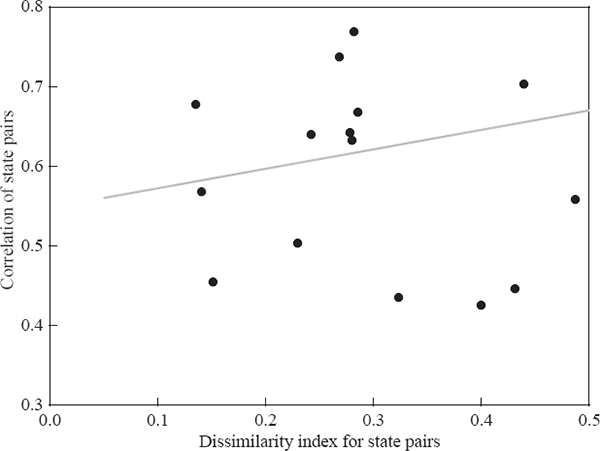RDP 2004-09: Co-Movement of Australian State Business Cycles Appendix A: Industrial Structure and Cyclical Co-movement
October 2004
- Download the Paper 739KB
Whilst it has traditionally been assumed that industry structure is an important determinant of cyclical co-movement, recent research has tended to suggest otherwise (Altonji and Ham 1990; Clark and Shin 2000). A simple test of the importance of industry structure for cyclical co-movement is to construct a measure of the industrial similarity of state pairs, and compare this with the correlation of their cyclical activity. We use Krugman's (1991) index of industrial dissimilarity, as shown in Equation (A1), which increases from 0 to a maximum value of 2 as two economies become less similar.
Here,  and
and
 represent
industry m's share of total factor income in states i and j
respectively. A scatter-plot of this index against correlations in band-pass filtered SFD is
presented in Figure A1.
represent
industry m's share of total factor income in states i and j
respectively. A scatter-plot of this index against correlations in band-pass filtered SFD is
presented in Figure A1.

Note: Trend line calculated excluding WA observations, as dissimilarity indices involving WA significantly exceed those among other states.
The results show that there is little relationship between the two, as indicated by the poor fit of the trend line. Furthermore, the trend line is actually positively sloped, counter-intuitively indicating that co-movement actually increases with differences in industrial structure, rather than with similarity. This simple exercise suggests that there is little role for industrial structure in explaining co-movement among state business cycles.
